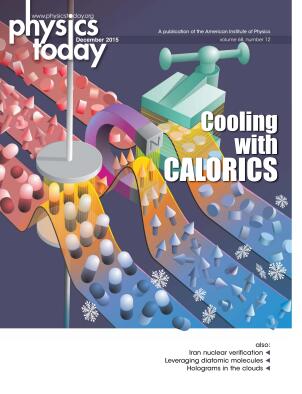Networking for Nerds: Find, Access and Land Hidden Game-Changing Career Opportunities Everywhere
DOI: 10.1063/PT.3.3025
I have always refused, on principle, to read books from the For Dummies series. Although I find “nerd” less insulting than “dummy,” I had similar reservations when I saw the title of Alaina Levine’s new book, Networking for Nerds: Find, Access and Land Hidden Game-Changing Career Opportunities Everywhere.

Levine is founder and president of Quantum Success Solutions, a public-speaking and leadership-training business. She has received acclamation for providing career-skills training to scientists through articles, webinars, and other activities, including her occasional blog posts for Physics Today’s website. The aim of her book—to teach students and professionals in science and related fields the networking skills needed to become leaders—is something I have long promoted as an adviser, and now director, of the Society of Physics Students. Recently Wes Watson, an SPS chapter officer at Sonoma State University, told me that “SPS turns nerds into leaders.” So I put aside my reservations and decided to see what Networking for Nerds had to offer.
Many scientists might ask why they should take the time to read a book on professional networking. Levine addresses that question in chapter 1; astrophysicist and Nobel laureate Brian Schmidt also addresses it in the foreword. Essentially, they both state that professional networking is critical for scientific advancements because it leads to collaborations and the exchange of ideas. Levine also discusses the “Hidden Platter of Opportunities,” a phrase she trademarked, which refers to the jobs and opportunities that come through a personal connection. And in making a distinction between valuable scientific networking available to all and unsavory backroom dealings, she sets the tone for the remainder of the book.
At just over 200 pages, Networking for Nerds is a relatively quick read, full of great advice. Replete with personal anecdotes, it covers a wide variety of topics, from dinner etiquette to critical tools for making the most of scientific conferences and social media. It also highlights the importance of learning to deal with failure, something all young scientists need to understand. For those of us who like to get to the highlights quickly, the book offers three useful features: bulleted textbook-style “Chapter Takeaways” summarizing key points; numerous text boxes containing tips; and an easily consumed main text, broken up into bulleted lists and small, digestible chunks.
It is difficult to determine which ideas in the book are original. Some of the topics have long been discussed, and many other articles, books, and websites treat the subject. However, Levine’s is the most complete single-volume coverage of networking for science students and professionals that I have come across, and her presentation on several topics is fresh and useful.
Physics students at all levels would benefit greatly from the lessons in this book. For example, during my frequent participation in the undergraduate sessions at scientific meetings, I have observed that students tend to interact primarily with people from their own institutions. They are missing a great opportunity; I encourage them to avoid doing that, as does Networking for Nerds.
All scientists, not just students, are likely to pick up several good tips from this book, especially on such contemporary topics as using social media for serious professional activities. Overall, Levine provides valuable advice on how to build and take advantage of your professional network—whether or not you like to be called a nerd.
More about the Authors
Sean Bentley is currently the director of the Society of Physics Students and of Sigma Pi Sigma, the physics honor society. In January he returns to his position as associate professor of physics at Adelphi University in Garden City, New York.
Sean J. Bentley. Society of Physics Students/Sigma Pi Sigma, College Park, Maryland.
